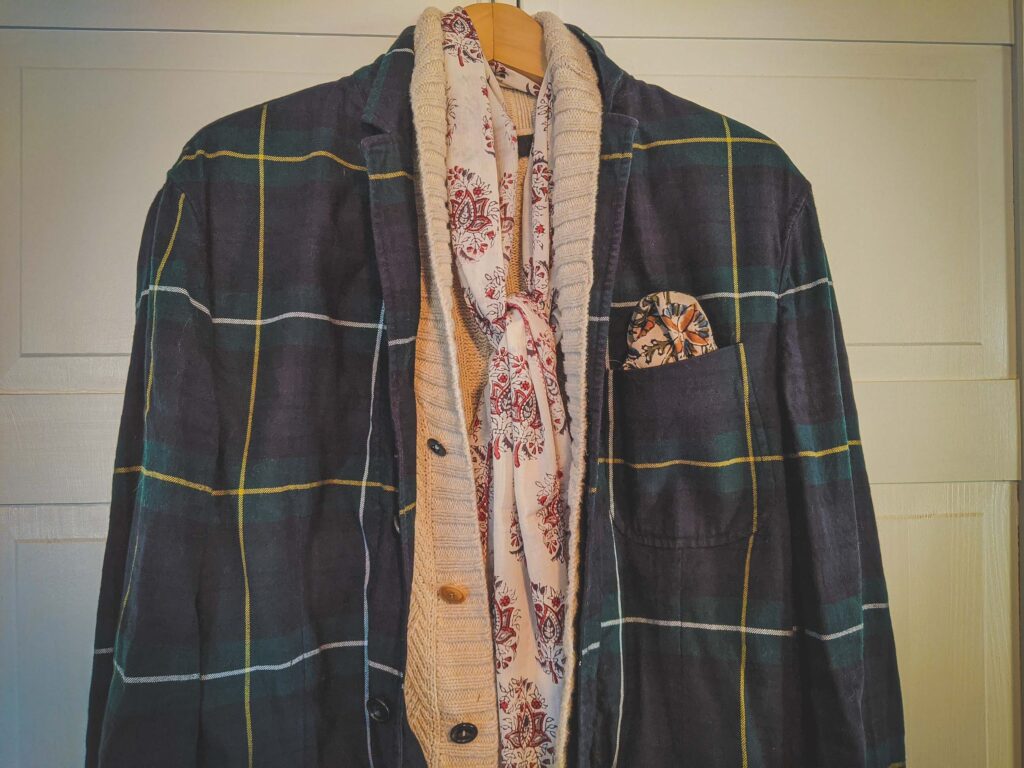Why Second-Hand Should Be Your First Choice When Shopping for Clothes and Accessories

About a decade ago, there was a specific plaid button-down that could be seen everywhere in New York City. The abundance of this simple shirt, sprinkled across the city like leaves in autumn, became a joke in various fashion blogs and periodicals. Simultaneously, approximately two-thirds of the women in New York City were wearing leather biker jackets with black leggings and Stan Smiths. Ubiquity has always been a curse of the fashion industry as detrimental to the consumer as price gouging. Brands hope to achieve it because it boosts sales but consumers with any sense of style hope to avoid it at all costs. Nothing sucks harder than seeing your favorite look pop up all around you like so many sartorial clones.
Fast Fashion combined with social media led to an explosion in trend following in the 2010s. A feedback loop was created when any look that trended could be procured on the cheap then just as that look burned out, a new one took its place. The terrible environmental impact of this process wasn’t really considered for years. However, the impact on popular fashion was obvious; shit got boring. Then. as the decade closed out, fashion’s second-hand market – long hovering on the fringes – broke into the mainstream. Years of hard work by a small but growing group of enthusiasts paid off. A national network of independent shops, a few large online marketplaces, and an army of side hustlers on eBay organically cultivated second-hand fashion into a legitimate force.
Vintage and resale markets have grown exponentially over the past few years. In 2020, traditional fashion retailers were forced to take notice of what was long considered a collection of niche interests. In 2021, second-hand will become a serious contender for increasingly scarce fashion consumer dollars. This newest disruption represents multiple issues that the fashion industry, as notoriously stuck in their ways as an octogenarian, must now recon with or perish. Severe transgressions against the environment and human rights through conventional production and distribution methods are avoided by recirculating fashion. By providing a viable alternative, the second-hand market is forcing fashion retailers to act more responsibly.
Along with a grand comeuppance for the fashion industry, a thriving second-hand market is beneficial to your personal style. Fundamentally, your personal style should be an aesthetic representation of your personality. Thus the more individuality you can achieve with your wardrobe, the better you can represent yourself to the world. The second-hand market, especially vintage, operates on individuality. Where traditional fashion paints with a broad brush, second-hand is a fine point pen. Whether you’re looking for something specific or just stumble upon a perfect piece, shopping second-hand provides a much higher degree of individualized personal style.
The second-hand market can be divided into two distinct categories: vintage and resale. The decisive characteristic differentiating the two is whether or not the item has been used but the distinctions can get fuzzy. Each category is operated by distinctly different characters yet they are both equally enthusiastic about what they do and the goods they sell. Vintage sellers have a passion of one or multiple distinct genres and time periods. They’re fashion history buffs. Resellers are all about the cutting edge of fashion trends, they’re hypebeasts and they thrive on scarcity. Both of them provide services that traditional retailers don’t offer and in that way they have created their own eco-systems that nurture enthusiasm, creativity, and individuality.
That enthusiasm, creativity, and individuality is the itch that the second-hand market is scratching. After all, we live in a free market economy, these businesses would not exist without demand for their goods and services. Consumers are more conscientious than ever about the environmental and human rights impact of the clothes they wear. second-hand fashion is essentially a recycling program for clothes and accessories run predominantly by small businesses and side hustlers. The people selling second-hand love what they do and are personally invested in the goods and business (as opposed to conventional retail workers earning minimum wage). Second-hand sellers operate with an artist’s spirit and they want to help consumers express their creativity.
Exclusivity is the other factor driving the second-hand economy. Those who cannot afford high-end brands when they’re new are provided access to that world. Those who can afford high-end brands are drawn to the scarcity factor of vintage high-end goods. Vintage sellers will refurbish old clothes and accessories to create items that haven’t been available to purchase for decades. Up-cycle artists will customize old items to create one-of-a-kind wearable works of art; the ultimate in exclusivity.
As far as it has come, the second-hand market is still new to most consumers. The stigma about buying used clothing and accessories still exists. Traditional retail isn’t going anywhere and will always have its place even among hardcore second-hand enthusiasts – no one is buying used socks and underwear. High quality new goods will always been needed to keep the system going. But the second-hand market is more approachable than ever and the inventory has grown to the point where you can find pretty much anything you want with a little practice and patience. Individuality in self expression is the ultimate goal of style and the second-hand market has become the best tool in achieving that goal. It also takes a load off your conscience by decreasing the human and environmental impact of your wardrobe. So whenever you’re shopping from now on, check second-hand first.
